5. Reservoir Dogs (1992, Quentin Tarantino)
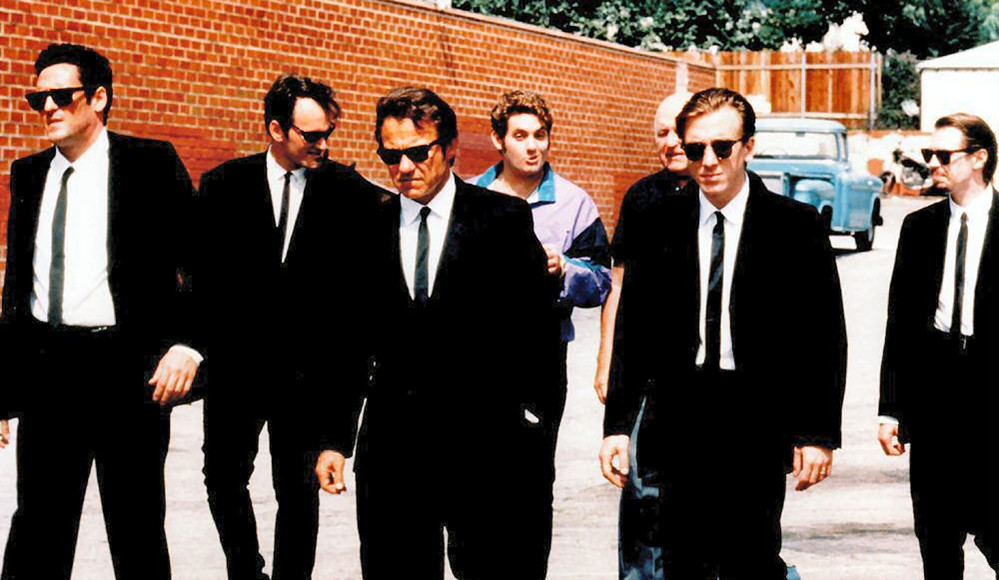
Quentin Tarantino exploded onto the film circuit with his fearless, uncompromising 1992 debut, Reservoir Dogs. Unafraid to wear his cinematic influences on his sleeve, whatever experience Tarantino may have lacked was made up for with his passion and cinephilia. Reservoir Dogs stars the likes of Harvey Keitel, Steve Buscemi, Tim Roth and Tarantino himself as the participants of a botched robbery of a jewellery store. After the police seem to arrive at the scene too soon, the gang become suspicious that one of the members must be an undercover agent.
Tarantino’s celebrated lust for life and taste for death has been clear since the very start of his career as Reservoir Dogs interweaves dynamic cinematography and magnetic performances with scenes of explicit violence. No matter how repellent what you are witnessing may be, something else is always drawing your eyes back to the screen and demanding admiration. Tarantino writes with a very colloquial but clever sense of humour that makes the dialogue naturally fizz and creates immediate chemistry between the characters. From the very first moments as the gang debate over how much to tip at the diner they are eating at, it is clear that these characters are going to be entertainingly antagonistic throughout the film.
In typical Tarantino fashion, the soundtrack reigns supreme. Reservoir Dogs’ most infamous scene is underpinned by Stealers Wheel’s “Stuck in the Middle with You”, as Michael Madsen’s Mr. Blonde tortures an abducted policeman. What may be music to our ears is most definitely not for the policeman’s as Mr. Blonde notoriously takes a straight razor to the lobes of the officer. Next to this scene, Tarantino’s debut is famed for its use of George Baker Selection’s “Little Green Bag” in its slow-motion opening credits that shows the members of the gang walk in slow-motion, dressed in suits and sunglasses. Ironically, considering Tarantino’s own love of homage, this scene has been copied and parodied numerous times while also gifting costumes for countless groups of teenage boys who wish to still look cool on Halloween. Love or hate Quentin Tarantino, he has had a profound and lasting effect on our popular culture since the very start.
4. Sexy Beast (2000, Jonathan Glazer)
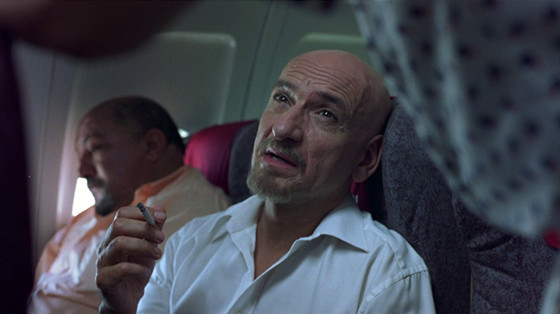
Following the 1995 Rettendon murders and the popularity of Guy Ritchie’s Lock, Stock and Two Smoking Barrels, there was a resurgence of interest in the British Cockney gangster film. This renewed attraction made action stars out of Jason Statham and ex-footballer Vinnie Jones but it was to the past that Jonathan Glazer turned by casting epochal Cockney hardman, Ray Winstone in his 2000 debut, Sexy Beast. Winstone plays a retired bank robber who has migrated to the South of Spain to sunbathe away the rest of his days. However, the unexpected arrival of an old acquaintance threatens to drag him back in for one last job, played to an astonishingly psychotic effect by Sir Ben Kingsley.
Although dominantly a conventional comedy-crime film, Sexy Beast foreshadows the more surreal stylistic path that Glazer would later pursue in the form of the occasional appearance of a shot-gun wielding demonic were-rabbit-like creature (in what can clearly only be deduced as a clear influence for Nick Parks’ 2005 masterpiece Wallace and Gromit: The Curse of the Were-Rabbit).
The opening of Sexy Beast exudes an assured arrogance. We are introduced to Winstone’s Gal, in skin-tight speedos, sweating in the Almerian sun, while The Stranglers’ “Peaches” saunters over the top. He is living any middle-class, middle-aged Britons retirement fantasy. The rest of the film maintains this unabashed confidence. Kingsley’s Don Logan is a foul-mouthed, brutish east-ender, unafraid to state his mind at any given moment. Immensely entertaining for the spectator yet intensely terrifying for the characters, Logan’s character is established immediately as he steps out of his taxi and barks: “I’ve gotta change my shirt, it’s sticking to me, I’m sweating like a c*nt”.
Kingsley states that he based his performance on the likeness of one of his grandmothers; a statement so brilliantly baffling that it makes you wonder what the Kinglsey family events must have been like for Sir Ben as a child. Clearly intimidated by Logan, Gal resists his aggressive insistence to go back to London until it becomes impossible for him not to- but not for the reasons that you would expect.
“Cool Britannia” may have been coming to its end by the start of the new millennium but Sexy Beast certainly keeps its flag flying high.
3. Le Cercle Rouge (1970, Jean-Pierre Melville)
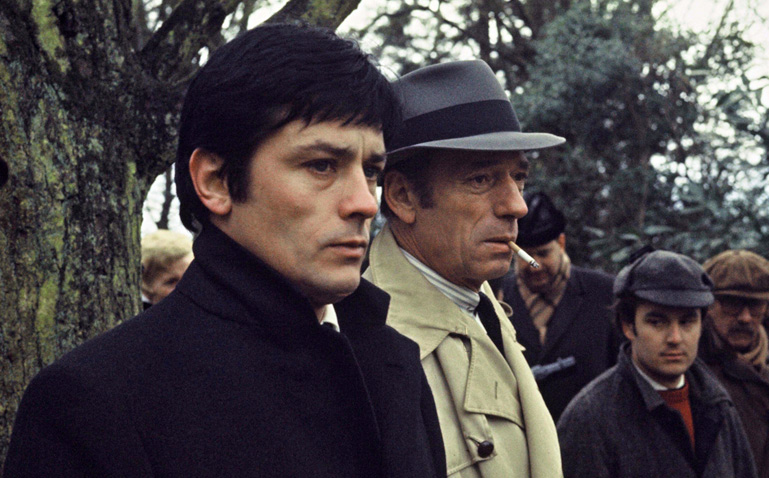
If a film stars Alain Delon then it is automatically cool, that’s a given. When he is combined with one of the best directors of French crime cinema of all time, Jean-Pierre Melville, and partnered with Gian Maria Volante (of Investigation of a Citizen Above Suspicion fame) and Yves Montand, then you’re potentially set with one of the coolest films ever made. Delon plays Corey, a recently released criminal, who is quickly seduced back into a life of crime after he is introduced to the plan of an elaborate jewel heist. After coincidentally teaming up with escaped murderer Vogel (Volante), they recruit the help of the alcoholic, former policeman, Jansen (Montand), to help them pull off the job. However, Police Commissioner Francois Mattei (Bourvil) is determined to track down Vogel no matter what.
Le Cercle Rouge abounds with examples of quintessential French style as Corey nonchalantly smokes endless cigarettes, casually adorned by a knee-long trench coat. Delon’s character is calm and confident, even when first confronting Vogel who had smuggled himself past the authorities in the boot of Corey’s car. Melville’s cinematography and frame construction are effortless and assured; clearly a director who knows what he wants and knows that what he wants is right. Most impressive is Melville’s depiction of the heist as he depicts the three men execute their meticulous plan perfectly in complete silence in what has to be a homage to Jules Dassin’s 1955 crime-noir Rififi. Melville doesn’t interfere in the events on-screen, instead just presenting the robbery simply and strategically, knowing that the silence and action will create all of the excitement and intensity possible.
For all of its sleekness and style, Le Cercle Rouge also contains moments of surrealism as Melville depicts the drunken nightmare of Jansen as he is swarmed by various reptiles and insects, shot in an expressionistic fashion with Chiaroscuro lighting and uncanny images. Particularly compared to the rest of the film, this scene is extremely unsettling and oneiric. Whether it is dealing with the grounded or the fantastic, Melville always knows how to intelligibly create strong, effective scenes with an understated ease.
2. Branded to Kill (1967, Seijun Suzuki)
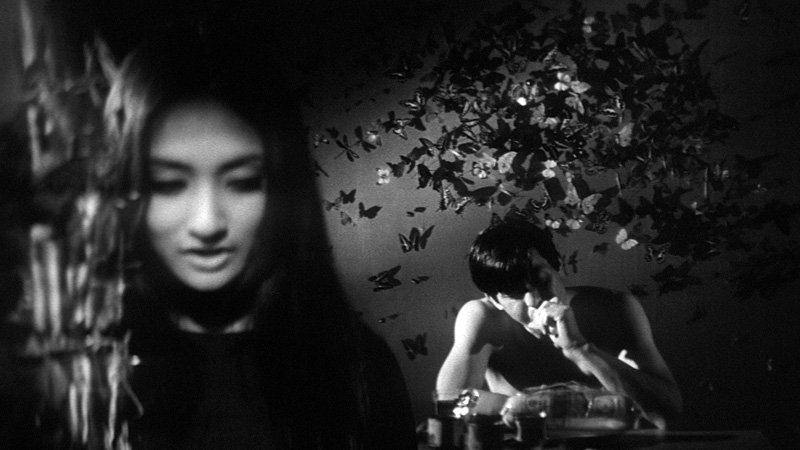
After the release of Branded to Kill, Seijun Suzuki was fired from the Nikkatsu production company for “making movies that make no sense and no money”. Although the film is a cult classic now, his dismissal is not surprising to discover as Branded to Kill is any production companies’ worst nightmare. Anarchic and absurd, the film tells the story of Goro Hanada, the third-ranked hitman in the whole of Japan. However, after a job gone wrong, he becomes the target of No.1 who has a very unconventional way of killing his targets. Following the film’s failure and Suzuki’s eventual law-suit against Nikkatsu, Suzuki was blacklisted from the Japanese film industry, not making another film until ten years later.
If there were such a style as “jazz-cinema”, Branded to Kill would be an example of it. To outsiders it may seem like a confused, overly-energetic mess of images and scenes but it strikes an atmospheric chord with those who resonate with it. The editing rhythm chimes with the intermittent jazz score while its chronology seems to unfold almost through impulse rather than any concrete reasoning. It may make little conventional sense when Hanada escapes by jumping out of a window onto a miniature blimp or when No.1 decides the best way to kill Hanada is to move in with him and gradually wear him down, but it makes atmospheric sense in this bizarre world that Suzuki has created.
Almost every piece of camerawork and mise-en-scene is hyper-stylised as sections of the screen are blocked to create different frame constructions. Lighting choices are designed to contrast as much as possible to heighten the strange frenzy, creating the impression of falling down a Chiaroscuro rabbit-hole. Weirdest of all is Hanada’s fetish for the smell of steamed rice which he uses to get himself in the mood for both sex and violence. Compared by Rumsey Taylor to the equivalent of James Bond having his martini “shaken, not stirred”, Suzuki satirises and mocks many of the genre conventions of crime and spy films to a ludicrous degree.
Suzuki let no one stand in his way when making Branded to Kill, basing every decision on what he believed would be the most entertaining. The result is definitely an acquired taste, but if it is to your palette then you have likely found one of your favourite films of all time.
1. King of New York (1990, Abel Ferrara)
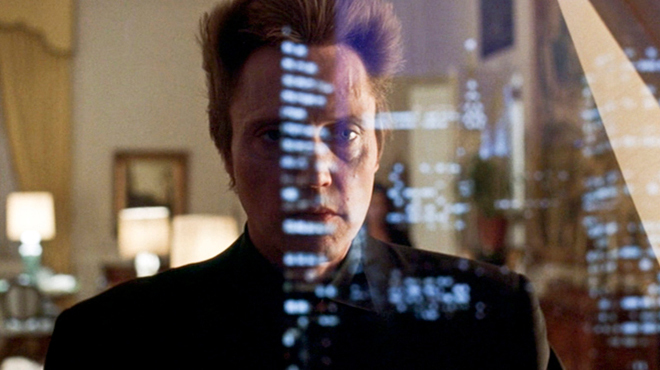
Abel Ferrara prides himself on being a divisive filmmaker. From the unapologetically violent Bad Lieutenant and The Driller Killer to the widely inaccessible narratives and style of New Rose Hotel and The Blackout, Ferrara has always challenged and polarised his audiences with his rough and ready approach to filmmaking. King of New York is perhaps Ferrara’s most accessible movie- a tightly, conventionally shot and presented gangster movie, starring Christopher Walken as Frank White, a former drug lord recently released from prison who sets out to exterminate all of his competition and use the profits to fund the poorest areas of New York.
Ferrara realises that Robin Hood is the biggest gangster of all time as he steals, cheats and kills, but all for a good cause. Gangster films are famous for being representative of the American Dream and capitalism, telling rags to riches stories of men who started out with nothing and end up with everything. However, King of New York presents perhaps the first socialist gangster film as blood money is used not to buy material items but fund the hospitals of poor districts and improve the society from which the gangsters came. Ferrara may now criticise his tight stylistic approach to King of New York, calling it “fascistic filmmaking”, but it is undeniably masterful for anybody else watching.
In King of New York, Ferrara blends the classic gangster type with a more contemporary notion of what it is to be a gangster as Walken’s Caucasian crime boss works alongside very 90’s-stylised African-American hoods. He wears suits to their gold chains while the soundtrack weaves between orchestral, atmospheric music, akin to that of the Godfather films, and hip-hop and rap.
Ferrara finds a complementary synthesis in a combination that could have very easily gone wrong while it is immensely enjoyable to watch Christopher Walken party with Laurence Fishburne and Giancarlo Esposito to music of Schoolly-D. Fishburne is having unrestrained delight with Walken’s swaggering right-hand man, while Giancarlo Esposito’s more composed performance is the epitome of cool with his black-out shades and leather coat. In one of many awesome shoot-out scenes, Fishburne’s Jimmy Jump hands a briefcase as payment for a batch of cocaine. When the drug dealer opens the case and finds only Tampax inside, Jimmy tells him “They’re for the bullet holes, Bitch” before blasting his chest full of lead.
There are no “good guys” or “bad guys” in King of New York as the police are represented as malicious and crooked as any of the criminals. In a world where crime is committed to help the most disadvantaged of society while the police break all of the rules that they want to stop them, there is not such a thing as heroes and villains. David Caruso and Wesley Snipes excel as gloriously hateable cops that, at the frustration of not being able to takedown White within the lines of the law, attempt to get rid of him by making it look like a drug deal gone wrong. It is impossible to over-emphasise just how perfectly despisable David Caruso is in this film.
King of New York may be looked upon derisively now by Ferrara for its very perfection and opposition to his filmmaking philosophy, but to us fans of the gangster genre, it is a mistake that we will very happily take.